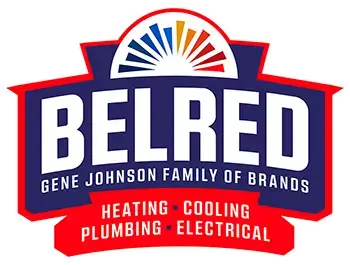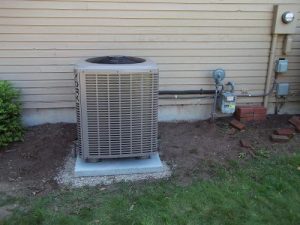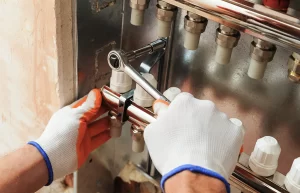Home automation has taken significant strides in the past few years, and Google Nest thermostats are at the forefront of this trend. These smart thermostats offer a myriad of features, including remote temperature control, energy-saving settings, and compatibility with voice assistants.
But the million-dollar question is: “Can I use a Google Nest thermostat for my HVAC system?” To answer this question, let’s dig a bit deeper into the world of Google Nest thermostats and HVAC systems.
Understanding Google Nest Thermostats
Google Nest thermostats are designed to integrate with your HVAC system, allowing you to control the temperature of your home or business remotely.
This ingenious device uses a variety of sensors and algorithms to learn your habits and preferences, gradually creating a schedule to help you save on heating and cooling costs.
Key features of Google Nest thermostats include:
- Remote temperature control: Using the Google Home or Nest app, you can adjust the temperature of your home from anywhere, ensuring your living space is comfortable before you even walk through the door.
- Energy-saving settings: The Nest thermostat learns your routine and adjusts itself accordingly. When you’re away, it sets itself to an Eco Temperature to save energy.
- Compatibility with voice assistants: Google Nest thermostats work with Google Assistant and Amazon Alexa, allowing for voice control of your heating and cooling systems.
HVAC Systems and Google Nest Thermostat Compatibility
HVAC (Heating, Ventilation, and Air Conditioning) systems come in various forms, including central air conditioning, heat pumps, furnaces and boilers. When considering a Google Nest thermostat, it’s crucial to understand its compatibility with these different systems.
Google Nest thermostats are designed to work with most 24V systems, even older models, and can handle all common fuel sources, including natural gas, oil, and electricity. During setup, the Google Home or Nest app will guide you to ensure your system is compatible with your Nest thermostat before you install it.
You can also check your system’s compatibility before purchasing a Nest thermostat with an online Compatibility Checker.
The specific brand or model of your HVAC system doesn’t matter for compatibility purposes. However, you will need to know the type of heating system you have.
If you’re unsure, check with your manufacturer or contact an electrical services professional for guidance.
Here at BelRed, we offer a wide array of electrical services, including thermostat installations. Contact us today to set an appointment and find out if your HVAC is compatible with Google Nest.
Systems That Are Nest-Compatible
Here is a table to help understand which systems are compatible with different types of Nest thermostats:
| System Types | Nest Learning Thermostat | Nest Thermostat E | Nest Thermostat |
| Heat only, cool only, or heat pump systems (C wire or Nest Power Connector required) | ✔️ | ✔️ | ✔️ |
| Natural Gas, Oil, or Electric fuel types | ✔️ | ✔️ | ✔️ |
| Single stage heating and/or cooling | ✔️ | ✔️ | ✔️ |
| Single stage heating with two stages of cooling | ✔️ | ✔️ | ✔️ |
| Two stages of heating with one stage of cooling | ✔️ | ✔️ | ✔️ |
| Single stage heat pump with or without AUX heat (C wire or Nest Power Connector required) | ✔️ | ✔️ | ✔️ |
| Single speed fan | ✔️ | ✔️ | ✔️ |
| Single stage heat pump with separate single stage furnace heating (Dual fuel) (C wire or Nest Power Connector required) | ✔️ | ✔️ | ✔️ |
| Single stage heat pump with separate two-stage furnace heating (Dual fuel) | ✔️ | ||
| Two stage heat pump with or without AUX heat | ✔️ | ||
| Two stage heat pump with separate two-stage furnace heating (Dual fuel) | ✔️ | ||
| Humidifier* or dehumidifier | ✔️ | ||
| Dual transformer systems | ✔️ | ||
| Two stages of cooling and two or three stage furnace heating | ✔️ | ||
| Two or three-speed fan | ✔️ | ||
| PTAC systems | ✔️ |
It’s important to note that professional installation is recommended for some systems due to their complexity. These include:
- Dual fuel systems (heat pump with furnace)
- Dual transformer systems (Systems that have more than one R wire)
- Whole-home humidifiers and dehumidifiers (compatible with Nest Learning Thermostat only)
Reach out to us today for expert installation services!
Incompatible Systems with Google Nest Thermostats
Although Google Nest thermostats are compatible with a wide range of 24V heating and cooling systems, there are a few exceptions. Attempting to install a Nest thermostat on an incompatible system may cause damage or inefficiencies.
Here are the types of systems that are not compatible:
Proprietary Systems
Proprietary systems often have non-standard labels on the thermostat’s connector, such as 1,2,3 or A, B, C. If your system has two wires but provides heating and cooling, it’s probably proprietary.
Google Nest thermostats are incompatible with proprietary systems. However, some proprietary systems can be rewired by a professional electrical services provider to be compatible.
Millivolt Heaters
Millivolt heaters are unique, low-voltage heating systems that typically include wall heaters or floor heaters powered by electricity or natural gas.
Unlike conventional HVAC systems, millivolt heaters rely on a small amount of electricity – a mere thousandth of a Volt, hence the name millivolt – to operate their control circuits.
Millivolt systems are often standalone systems not connected to the home’s main electrical system. Instead, they generate their own power through a thermopile (a device that converts thermal energy into electrical energy) within the heater.
This energy is just enough to operate the thermostat and gas valve.
While this independent operation can be advantageous – for instance, during a power outage, your millivolt heater will keep running – it also presents compatibility issues with devices like Google Nest thermostats.
The Nest thermostats require a higher, more consistent voltage to maintain their smart features, including Wi-Fi connectivity and digital display, which millivolt systems simply can’t provide.
Solid Fuel Systems
Solid fuel systems utilize a variety of solid materials, such as coal, wood chips, pellets, anthracite, or other biomass materials, to generate heat.
These systems, often seen in the form of wood-burning stoves or coal furnaces, have been used for centuries for heating purposes.
Despite their long history, solid fuel systems present a unique challenge for modern, smart thermostats like Google Nest. The primary reason is the way these systems generate and regulate heat.
Unlike gas or electric heating systems, which can turn on and off rapidly in response to thermostat settings, solid fuel systems can take a longer time to heat up and cool down due to the nature of their fuel.
This makes precise, short-term temperature control, as facilitated by smart thermostats, practically impossible.
High Voltage Systems
High voltage systems, such as electric baseboard heating systems or other radiant systems powered by electricity, are typically incompatible.
These systems usually have thermostats built into the wall with 2 to 4 thick wires coming out of the thermostat.
Wire nuts often connect the thermostat to the system wires. You may find these systems labeled 110, 115, 120, or 240 VAC.
In some cases, it is possible to make a high-voltage system Nest-compatible with the help of a professional.
They can install a step-down transformer to 20 – 30 V, enabling the system to work with a Nest thermostat.
Due to the high voltage they carry, only professionals should install or uninstall these thermostats.
Call BelRed today for expert electrical services!
Incompatible Wirings with Google Nest Thermostat
Some wiring scenarios may also be unfit for the Google Nest Thermostat. Check below to confirm your HVAC system is a good match for the technology:
Too Many Stages of Cooling or Heating
The number of stages your HVAC system has can impact the compatibility with a Google Nest thermostat. Stages refer to the ability of the system to adjust its output based on the demand.
A single-stage system can only be on or off, while a two-stage system can operate at a high and a low level, providing more nuanced temperature control.
The Nest Learning Thermostat works with units that have one or two cooling phases.
Meanwhile, the Nest Thermostat E is only compatible with one stage of heating and cooling, as well as an additional stage of either heating or cooling.
Systems with more than these stages might not work optimally with these thermostats.
International Systems
Certain international systems, like Buderus boilers, may pose compatibility issues due to their unique wiring, such as dry contacts.
These systems may require relay panels for installation with standard American thermostat wiring.
It’s best to consult with an electrical services professional if you have an international system to ensure correct and safe installation.
Heat Pumps with L Wires
L wires, also known as Service Light wires, are typically used to show system status, like emergency heat being on.
Although Nest thermostats can work with systems that use L wires, these wires can’t be directly connected to the Nest thermostat.
Fortunately, the Nest thermostat and Nest app are designed to provide you with system status information without needing to connect the L wires.
We Make Nest Installation a Breeze!
Not sure if your HVAC system is compatible with a Google Nest thermostat? That’s where BelRed steps in!
As experts in HVAC systems and smart home technology, we’re here to take the guesswork out of your thermostat upgrade.
We’ll assess your current HVAC setup, identify any compatibility issues, and provide comprehensive solutions tailored to your needs.
If your system is Nest-compatible, we can guide you through a seamless installation process. And if it’s not, don’t worry!
We can discuss potential upgrades or alternative smart thermostat solutions that work perfectly with your existing system.
BelRed is committed to ensuring your home stays comfortable and energy-efficient year-round.
Reach out to us today, and let’s turn your smart home dreams into reality.







